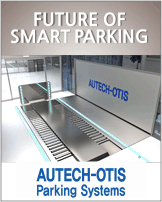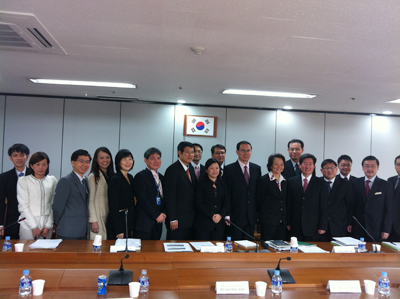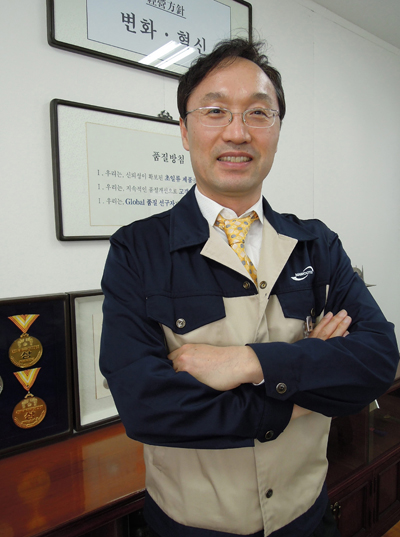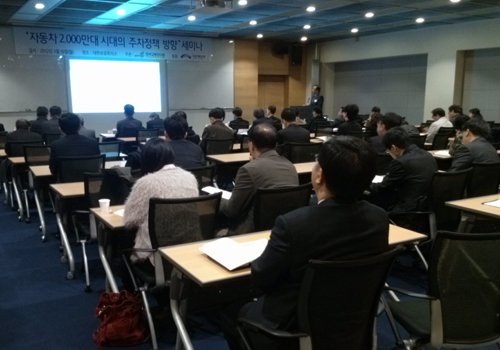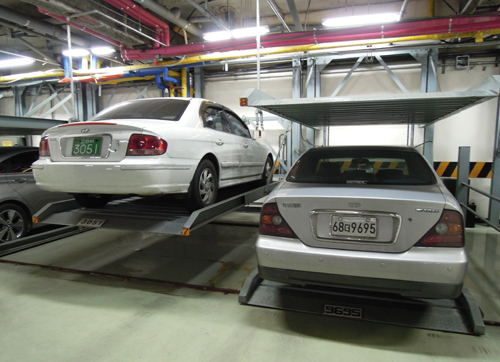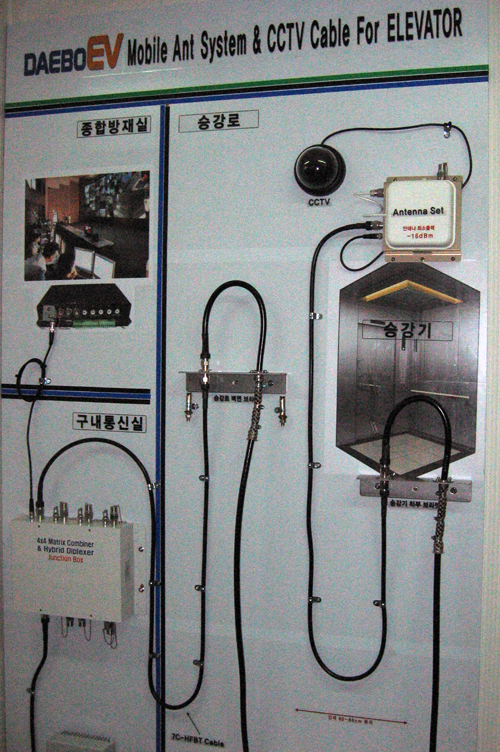|
|
|
Korea Industrial Technology Testing Institute International Technical Seminar Inviting Elevator Experts Increased interest in European certifications such as PESSRAL-SIL and 9 additional certified items 2012/04  In July, the Enforcement Rules of the Quality Management and Product Safety Management Act (hereinafter referred to as the Product Safety Management Act) will be promulgated to add a reverse running prevention device for escalators, which is a mandatory certification (safety certification) item for elevator parts, and eight voluntary safety certification items. As a result, the number of certified items covered by the Product Safety Management Act has increased by 9 to 14, up from the previous 5 items (accelerator, emergency stop device, shock absorber, elevator door lock, and brake for upward overspeed prevention device). The new items include eight items subject to autonomous safety verification, including reverse running prevention devices for escalators and braking devices for elevator hoists, lurcher valves, safety limit switches for elevators, wire ropes, steps for escalators, step chains for escalators, electronic brakes for escalators, and safety circuit boards. Of particular note is that five of the nine additional parts are related to escalators. This is proof that there have been a lot of escalator accidents such as falling, reverse running, and speeding accidents recently, so the government is taking extraordinary measures to prevent safety accidents. Among the additional parts, the anti-reverse running device for escalators is subject to the same certification system as the five compulsory certified parts for elevators, requiring factory inspection and product testing, and quality control through follow-up inspections every two years. For the eight items subject to voluntary safety verification, only product testing is conducted without factory inspection, and post-testing is conducted every five years, similar to how manufacturers in Europe make a self-declaration of conformity (SDOC) for their products. If both the items subject to voluntary safety verification and safety certification pass the certification audit, they can obtain the KC mark, a certification mark for elevator safety parts. In January, the Ministry of Knowledge Economy's Korea Institute of Technology and Standards announced the proposed amendment to the Enforcement Rules of the Products and Services Act, which will be finalized next year after a one-year grace period following the July announcement. In response, Korea Testing & Research Institute (KTL), which is in charge of certifying elevator parts, held an 'International Technical Seminar Inviting Elevator Experts' on February 29 at the auditorium on the 7th floor of KTL's headquarters in Guro-dong, Seoul, inviting experts from DNV Elevator in Europe. The seminar focused on the Safety Management System for Manufactured Goods and the European Elevator Safety Management System (EN 81-1), including the aforementioned amendments to the Enforcement Rules of the Products Act, and aroused high interest from industry stakeholders. The event was attended by a total of 120 people, including Mr. Soren Juhlin, a researcher at the Technical Standards Institute of the Ministry of Knowledge Economy, DNV, Mr. Jeon Seon-jin, President of the Elevator Engineering Society, Mr. Heo Yoon-seop, Team Leader of the Korea Elevator Safety Management Institute, Mr. Lee Sun-soon, General Manager of the Korea Elevator Safety Technology Institute, and Mr. Yoon Yong-geun, Managing Director of Schindler Elevator, as well as industry officials and elevator manufacturers. "Through this seminar, domestic elevator manufacturers and related organizations can share information on the latest trends in domestic and European certification systems to prepare for product design and manufacturing that meets certification standards," said Lee Joo-hwan, head of KTL's Elevator Certification Team. "The basic information and requirements for PASSRAL, an evaluation that is received when a program is incorporated into a safety circuit, and SIL, a safety integrity evaluation method, will be especially helpful to elevator manufacturers." "As the need for safety management increases due to the increasing distribution of low-grade elevator parts and the increasing rate of safety accidents, the need for safety management is increasing," said Shin Byeol-soo, a researcher at the Korea Institute of Standards and Technology, who presented the domestic elevator parts certification system, In the second half of last year, we adjusted the safety management items of elevators through the Industrial Product Safety Review Committee and the Prime Minister's Office Regulatory Reform Committee, and proposed the enactment of safety standards for nine additional elevator parts on January 4, this year." "Currently, the Prime Minister's Office Regulatory Reform Committee is deliberating and reviewing the legislation, and parts certification for nine additional elevator parts in addition to the five major elevator safety parts that are currently subject to certification will be implemented through a notice in July." The elevator parts certification system was first implemented and applied in Korea in July 2006. Compulsory certification was granted to five elevator safety parts, namely, the accelerator, emergency stop device, shock absorber, overspeed prevention device (including the opening and departure device), and elevator door lock, while voluntary certification was applied to the elevator system. On March 1, 2009, the certification provisions of the existing elevator-related laws were transferred to the Products Act for the five mandatory certified elevator safety parts and the Electrical Appliances Act for the voluntary elevator system certification, and the existing EK mark, a certification mark for elevator safety parts, was replaced by the KC mark, a single mark issued for 736 items of daily necessities such as automobiles and elevators. Amendments to the Enforcement Rules of the Products and Services Act to be Notified in July Among the nine new items, the most eye-catching is the escalator backtracking prevention device, which has been designated as a safety certification item. The item was recently adjusted from a product subject to autonomous safety verification to a product subject to safety certification, and is also scheduled to be designated as a product subject to safety certification under Article 14 (3) of the Product Engineering Act. The reverse running prevention device for escalators is a device that stops the escalator safely by detecting when the step, pallet, or belt changes direction from the initially set running direction in case the drive chain breaks or the gear of the driver breaks, and there are four types of devices, including the pawl ratchet wheel method, disc wedge method, and disc brake method. In addition to these, ▲ Brake for the Elevator: A brake that brakes the motor shaft at the same time as the power is cut off to protect passengers in the event of an abnormality during elevator operation ▲ Final limit switch for elevators: Installed to electrically stop the car in the event of a part of the elevator traveling past the end floor ▲ Rupture valve for elevators: Rupture valve and one-way flow restrictor for hydraulic elevators that stops operation by cutting off the flow when the hydraulic elevator descends at an excessive speed above the rated speed ▲ Step for escalators: Step, a stepping plate for escalators, and pallet, a stepping plate for horizontal walkers ▲ Step Chain for Escalator: Step chain and pallet chain used to drive the escalator step and pallet of the horizontal walker ▲ Brake for the Escalator: A brake that brakes the motor shaft while cutting off the power to protect passengers in the event of an abnormality during the operation of the escalator and horizontal walker ▲ Wire rope: Wire rope for winding machine used in elevators ▲ Safety circuit board (Test for printed circuit board including safety circuit of elevators): Safety circuit board including electronic parts of elevators and escalators ▲ Safety standards for products subject to autonomous safety verification under Article 19, Paragraph 2 of the Product Engineering Act (KITA Announcement No. 2012-9), which specifies the scope of application, type, structure, test methods and procedures for autonomous certification items such as safety circuit boards. "This will enable safer management and use of elevators," said Shin, adding, "The supply of safe elevator parts should be achieved through unification of relevant departments, diversification of certification bodies, reduction of testing costs, and voluntary compliance by the industry." The aforementioned nine certified parts are included within the scope of the product safety management system. "It is differentially managed as a product subject to safety certification, voluntary safety verification, and safety and quality labeling according to the degree of consumer harm," said Shin, explaining that the intention is to manage products in the safety net at all stages of manufacturing, import, sales, and use. The 14 items with the highest risk are managed from the production stage through product inspections and factory audits under the safety certification system, and include products such as accelerators, tires, and child car seats. The 47 products subject to voluntary safety verification are subject to safety tests and inspections at designated inspection centers before shipment and customs clearance, and report their compliance to the safety certification agency, including climbing ropes, strollers, and diapers. In addition, industrial products subject to safety and quality labeling (30 products) are subject to safety and quality labeling before sale by confirming that the product meets safety standards. Currently, the Korea Institute of Technology and Standards has established a follow-up management plan to investigate products on the market and conduct educational publicity, while local governments are taking administrative measures to crack down on illegally distributed products. To ensure the safety of industrial products, there are currently six organizations designated under Article 12 of the Product Engineering Act, including KTL, the Korea Testing and Research Institute for Chemical Convergence, the Korea Testing Institute for Construction and Living Environment, the Korea Testing Institute for Mechanical, Electrical and Electronic Testing, and the Korea Testing Institute for Apparel, which are designated and announced by the KITA after review, on-site examination, and deliberation by the review committee. PESSRAL-SIL as an elevator inspection standard Next, Mr. Soren Juhlin, an examiner from DNV, a Norwegian certification body, gave a presentation on the 'European Elevator Safety Management System', which highlights the recent revisions to the certification standards in Europe in relation to EN 81, as well as the additional UCMP (Uncontrolled Movement Protection means) for elevator safety devices. In particular, the revision of EN 81 is related to the evaluation of PESSRAL (Programmable Electronic System in Safety Related Applications for Lifts) and the SIL (Safety Integrity Level) rating of the safety integrity level, and it was included as a recommendation in Korea as the elevator inspection standard was revised on the 14th of last month, and the attendees asked questions about the concept definition, certification method and procedure. In general, the safety circuit of an elevator stops the elevator when the safety switch is activated to prevent further danger, but it is necessary to verify that the safety circuit is working smoothly at any time to prevent a larger accident. Safety circuits are usually composed of components such as relays and transistors, but sometimes they are also composed of programs. If a safety circuit contains a program, it must be PESSRAL evaluated and the programmed failsafe must be satisfied with a Safety Integrity Level (SIL) rating. SIL refers to the Safety Integrity Level rating required by EN 81-1 and is an individual level to define the safety integrity requirements of the safety functions assigned to a PESSRAL, with European Standard SIL 1 being the lowest and SIL 3 being the highest integrity level. "Until now, we have been testing components, but we have not tested safety devices that reflect a program," said Lee Joo-hwan, head of the elevator certification team. "EN 81-1 requires us to evaluate whether the safety device meets the prescribed safety class, and we evaluate whether the program can minimize accidents in the event of a failure in the safety circuit by assigning a rating called a seal." In particular, "the PassRAL evaluation is not applicable to the use of switches or TTLs in the safety circuit, but only to the application of the program to the safety circuit," he said, adding that "certification is required, not recommended, for export to Europe." However, the cost of certification for a pass-through or seal rating can run into the tens of millions of dollars, making it unaffordable for all but the largest companies. The elevator inspection standard is recommended, but it is mandatory in Europe, so companies that are preparing or planning to export overseas are trying to get certified. "Earlier this year, KTL was designated as an internationally recognized accreditation body for the SIL field (IEC 61508), and the certification process for passages and seals is similar to other parts certification, only the evaluation method and tools are different," said Lee Joo-hwan. "It is expected that the inspection standard will change from a recommendation to a requirement as it becomes EN, so companies should be interested." |

|
 Home Intro
Home Intro
